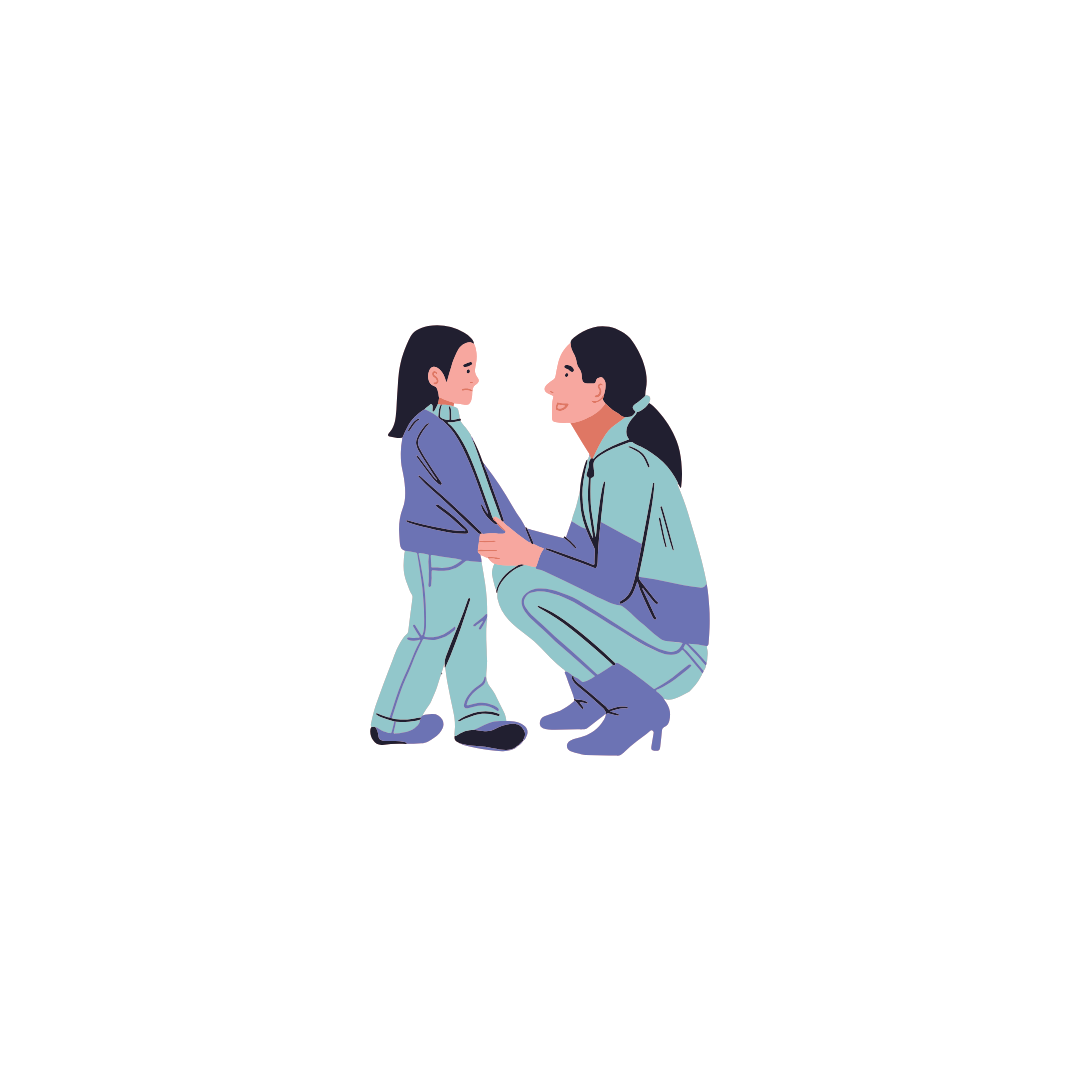The Role of Family in Supporting Someone with OCD
Living with Obsessive-Compulsive Disorder (OCD) can be tough, not just for the person experiencing it, but also for their family members. OCD involves intrusive thoughts (called obsessions) and repetitive actions or rituals (compulsions) that can interfere with daily life. Because OCD is often misunderstood, family support plays a huge role in helping someone cope with their symptoms and manage their condition. In this blog, we’ll talk about how families can offer support to a loved one with OCD, based on research and expert advice.
1. Understanding OCD and Its Impact on the Family
The first step in helping someone with OCD is understanding what the disorder really is. OCD is not about just being “neat” or “particular” (Foa et al., 2005). It’s a serious mental health condition where the person experiences persistent, unwanted thoughts or worries that cause intense anxiety. To deal with these thoughts, they feel compelled to perform certain behaviors or rituals. These compulsions might involve checking things repeatedly, washing hands many times, or arranging things in a specific order (Baer, 2009).
The anxiety caused by these thoughts can make it difficult to focus, study, work, or even socialize. The rituals or compulsions may take hours a day, causing frustration and stress for both the person with OCD and their family members (Pinto et al., 2006). The more family members understand this, the better they can help support their loved one in a compassionate way.
2. Offering Emotional Support and Empathy
Supporting someone with OCD starts with emotional support. It’s essential for family members to listen without judgment and provide reassurance when needed. People with OCD often feel isolated or embarrassed by their obsessions and compulsions, so family members who offer empathy can make a huge difference in how the person feels about their condition (Stewart et al., 2005).
Sometimes, just letting someone talk about their struggles can help ease the anxiety they’re feeling. Listening, acknowledging their feelings, and reassuring them that they are loved and supported can go a long way in reducing the emotional burden that comes with OCD (Hirschfield, 2014). It’s important to avoid minimizing the problem or saying things like, “Just stop doing that,” as this can make the person feel invalidated and misunderstood.
3. Encouraging Treatment and Therapy
A big part of family support is encouraging treatment. OCD is a chronic condition that often requires professional help, usually in the form of Cognitive Behavioral Therapy (CBT), particularly a technique called Exposure and Response Prevention (ERP). ERP involves gradually exposing the person to the situations that trigger their anxiety (without performing the compulsion), which can help reduce the urge to engage in rituals (Foa et al., 2005).
Family members can help by gently encouraging their loved one to seek treatment and stick with it. Sometimes people with OCD may resist therapy because they fear the discomfort of facing their fears. Family support can be crucial in helping them stay committed to their treatment plan (Hirschfield, 2014).
Moreover, families should also encourage open discussions about any concerns or difficulties that arise during treatment. If the person is struggling with a specific part of the therapy, a supportive family member can help them communicate those challenges to their therapist (Baer, 2009).
4. Avoiding Enabling Behaviors
While it’s natural to want to help a loved one feel better, it’s important that family members avoid enabling behaviors. Enabling happens when family members try to reduce their loved one's anxiety by doing things for them or helping them perform compulsions. For example, a parent might repeatedly check if the door is locked for their child with OCD, or a partner might wash dishes for their loved one to avoid the anxiety that comes with germs.
While these behaviors may provide temporary relief, they actually make OCD worse in the long run. Enabling rituals reinforces the compulsions and prevents the person from learning to manage their anxiety on their own (Stewart et al., 2005). It’s important for family members to recognize when they might be enabling and instead encourage the person to face their fears with the help of therapy.
5. Setting Boundaries and Being Patient
OCD can be very time-consuming, and family members often become involved in the rituals and routines that a person with OCD feels compelled to perform. While it’s important to offer support, it’s equally important to set healthy boundaries. Family members should avoid getting caught up in their loved one’s compulsions or feeling responsible for making them feel better (Baer, 2009).
It’s also important to remember that treatment takes time. Even though progress may be slow, family members should be patient and understanding as their loved one works through the process of managing their OCD symptoms (Pinto et al., 2006). It’s not an overnight fix, but with consistent support and therapy, the person with OCD can learn to manage their symptoms and live a more balanced life.
6. Learning About OCD Together
One of the most effective ways to support someone with OCD is for the family to educate themselves about the disorder. Understanding how OCD works and the challenges it brings can reduce feelings of frustration and confusion. Family members can attend therapy sessions with their loved one or seek out resources that provide more information about the condition (Hirschfield, 2014).
There are also support groups where family members of people with OCD can share their experiences and learn from others who are going through similar situations. Connecting with others who understand can help reduce the sense of isolation that families often feel (Stewart et al., 2005).
7. Celebrating Small Victories
Living with OCD is hard work, and progress can sometimes feel slow. Family members should celebrate small victories along the way, such as reducing the amount of time spent on compulsions or being able to face a feared situation without performing a ritual. Recognizing these milestones helps build motivation and encourages the person with OCD to keep going, even when it feels tough (Pinto et al., 2006).
Positive reinforcement and celebrating the person’s efforts can boost their self-esteem and strengthen their resilience as they continue to work through their challenges.
Supporting someone with OCD is a long-term commitment, but it’s also incredibly important for their recovery. Family members can make a huge difference by offering emotional support, encouraging treatment, avoiding enabling behaviors, and setting healthy boundaries. It’s not always easy, but with patience and understanding, families can help their loved ones with OCD live a more balanced and fulfilling life.
Baer, L. (2009). Cognitive-behavioral therapy for obsessive-compulsive disorder. Psychiatric Clinics of North America, 32(3), 551-563. https://doi.org/10.1016/j.psc.2009.05.004
Foa, E. B., Huppert, J. D., & Leiberg, S. (2005). The anxiety disorders: Obsessive-compulsive disorder. Handbook of Anxiety and Fear, 503-540.
Hirschfield, R. (2014). Understanding obsessive-compulsive disorder (OCD). Journal of Clinical Psychiatry, 75(12), 1373-1380. https://doi.org/10.4088/JCP.13m08947
Pinto, A., & Smits, J. A. J. (2006). OCD and social functioning: An empirical study of the social difficulties in obsessive-compulsive disorder. Journal of Anxiety Disorders, 20(2), 318-324. https://doi.org/10.1016/j.janxdis.2005.05.007
Stewart, M., Wessely, S., & Marks, M. (2005). The impact of OCD on social relationships. Journal of Anxiety Disorders, 19(3), 282-292. https://doi.org/10.1016/j.janxdis.2004.03.006


